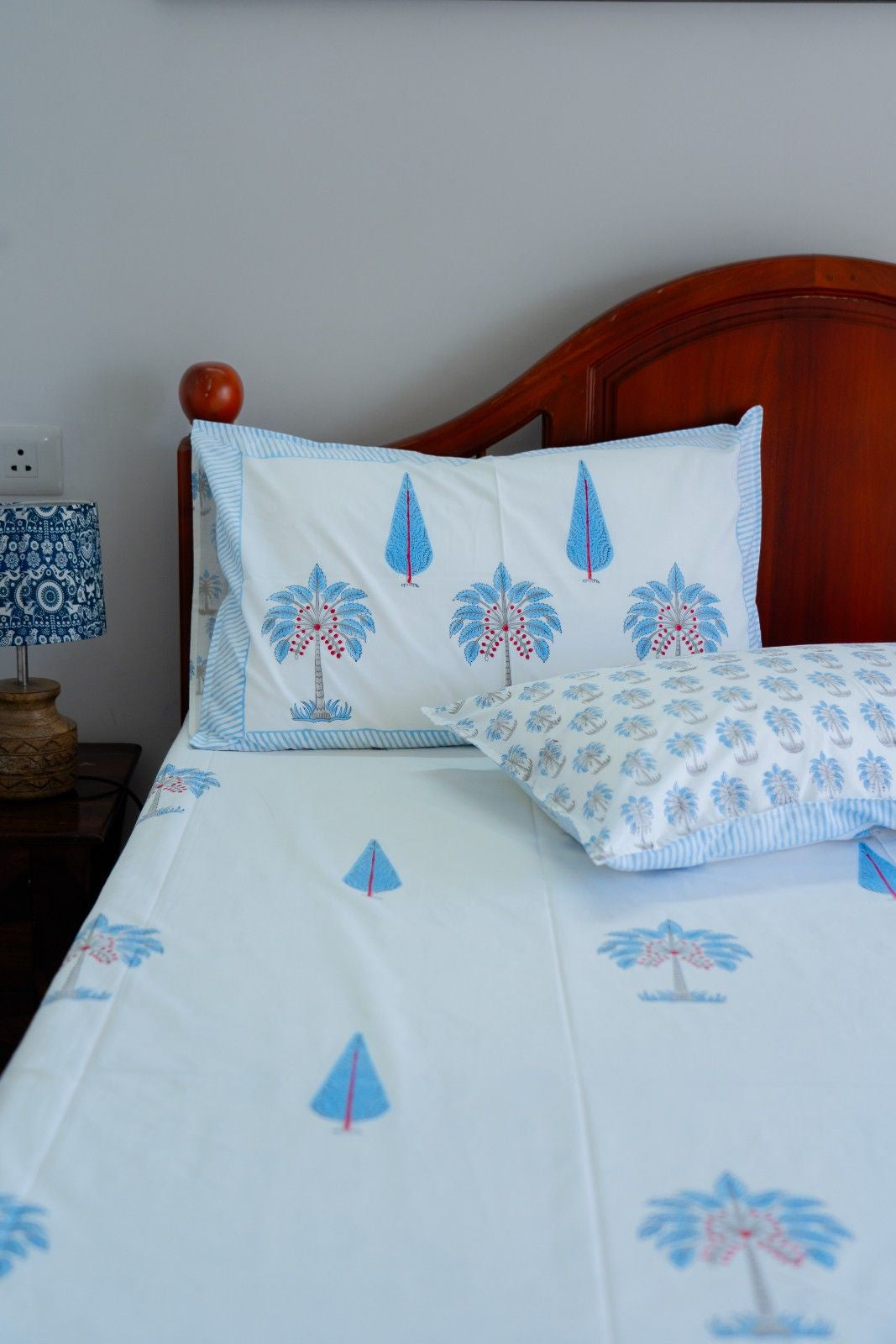
The Global Story of Bedsheets: Cultural Design Inspirations Textile Narratives: How Bedsheets Reflect Cultural Identity
Bedsheets are more than mere functional items; they are canvases that tell stories of tradition, artistry, and creativity. Around the world, textile designs in bedding are rich with meaning, reflecting the history, cultural identity, and craftsmanship of their regions. From intricate handloom weaves in India to the bold geometric patterns of Moroccan art, each bedsheet design represents a piece of cultural heritage. This exploration reveals how global design inspirations enrich our lives, adding layers of beauty and meaning to everyday spaces.
Global Design Influences in Bedsheet Artistry
The influence of cultural motifs and regional techniques adds depth and uniqueness to bedsheet designs. Here’s a look at how different countries contribute to the world of textile art through bedding.
Indian Textile Traditions
India’s textile heritage is one of the oldest and most diverse in the world, with each region contributing distinct styles and techniques. Indian bedsheet designs showcase vibrant colors, detailed patterns, and a rich history of textile innovation.
-
Block Printing Techniques: Block printing is a centuries-old tradition in India, particularly in regions like Rajasthan. Artisans carve intricate patterns onto wooden blocks, dip them in natural dyes, and press them onto fabric to create repeating motifs. Block-printed bedsheets often feature floral, paisley, and geometric designs, which add a rustic, artisanal charm to any bedroom.
-
Handloom Weaving Traditions: India’s handloom industry is vast, with each region producing unique fabrics. For example, Ikat and Dobby weaves create stunning textures that are both luxurious and durable. Handloom bedsheets embody sustainability and craftsmanship, as they’re made using eco-friendly processes with minimal waste.
-
Intricate Regional Patterns: Patterns like the Gujarat Bandhani, Bengali Kantha, and Andhra Kalamkari represent the diversity of Indian textile art. These regional patterns not only highlight the skill of Indian artisans but also reflect India’s cultural richness, giving each bedsheet a unique story.
-
Sustainable Production Methods: Many Indian textile practices are rooted in sustainability. Artisans use natural dyes, handwoven fabrics, and organic cotton, supporting eco-friendly production that reduces environmental impact while promoting fair trade.
Global Bohemian Inspirations
Bohemian-style bedsheets have gained popularity worldwide, incorporating influences from diverse cultures. From Moroccan geometry to Japanese minimalism, boho bedding brings an eclectic yet harmonious vibe.
-
Moroccan Geometric Designs: Moroccan-inspired bedsheets are known for their geometric patterns, often in bold colors like indigo, ochre, and emerald. The intricate designs, rooted in Islamic art, add a sense of mystery and luxury to any space.
-
Peruvian Textile Art: Peruvian textiles, with their vibrant colors and distinctive patterns, often tell stories of the Andean people. Traditional designs on bedsheets feature bold patterns, earthy tones, and symbolic motifs, adding warmth and personality to the bedroom.
-
Japanese Minimalist Approaches: Japanese bedding often embodies the principle of “wabi-sabi” – the beauty of simplicity and imperfection. Japanese-inspired bedsheets typically feature minimalist designs, natural fibers, and soft, neutral tones. These elements create a calming, Zen-like atmosphere, ideal for minimalist or modern bedroom aesthetics.
-
Mediterranean Color Palettes: Mediterranean-inspired bedsheets use a refreshing color palette of whites, blues, and earthy tones that reflect coastal scenery. These designs often include floral and nautical motifs, bringing a sense of peace and relaxation reminiscent of seaside life.
Ethical and Sustainable Choices in Global Textile Production
Today, more people are embracing ethical and sustainable choices when it comes to bedsheets. Opting for fair trade, eco-friendly materials, and supporting local artisans can make a positive impact on both the environment and communities worldwide.
Key Considerations for Sustainable Bedsheets
-
Fair Trade Practices: Fair trade ensures that artisans and weavers are paid fairly for their work, supporting their livelihoods. Purchasing fair trade bedsheets means you’re contributing to economic empowerment and helping artisans continue their craft.
-
Eco-Friendly Manufacturing: Sustainable bedsheets are often made from organic cotton, bamboo, or other renewable materials, which reduce environmental harm. Eco-friendly production also involves using non-toxic dyes and low-waste processes, creating bedding that’s both safe and sustainable.
-
Supporting Local Artisans: Choosing bedsheets from local artisans promotes cultural preservation. For example, buying handwoven or hand-printed designs directly supports craft communities and encourages the continuation of traditional skills.
-
Sustainable Material Sourcing: Opt for bedsheets made from materials like organic cotton, bamboo, or hemp. These materials are renewable, biodegradable, and often produced with less water and fewer pesticides, making them better for the environment.
Final Thoughts: Embracing Cultural Narratives in Your Bedroom
From India’s ancient weaving techniques to the minimalist elegance of Japan, bedsheets inspired by global traditions add a touch of artistry and meaning to our living spaces. They invite us to appreciate the diversity of cultures, connect with age-old textile practices, and make mindful choices that support sustainability. Embracing these cultural narratives in our bedrooms not only enhances our comfort but also celebrates the beauty of human creativity and craftsmanship in its most intimate form.

